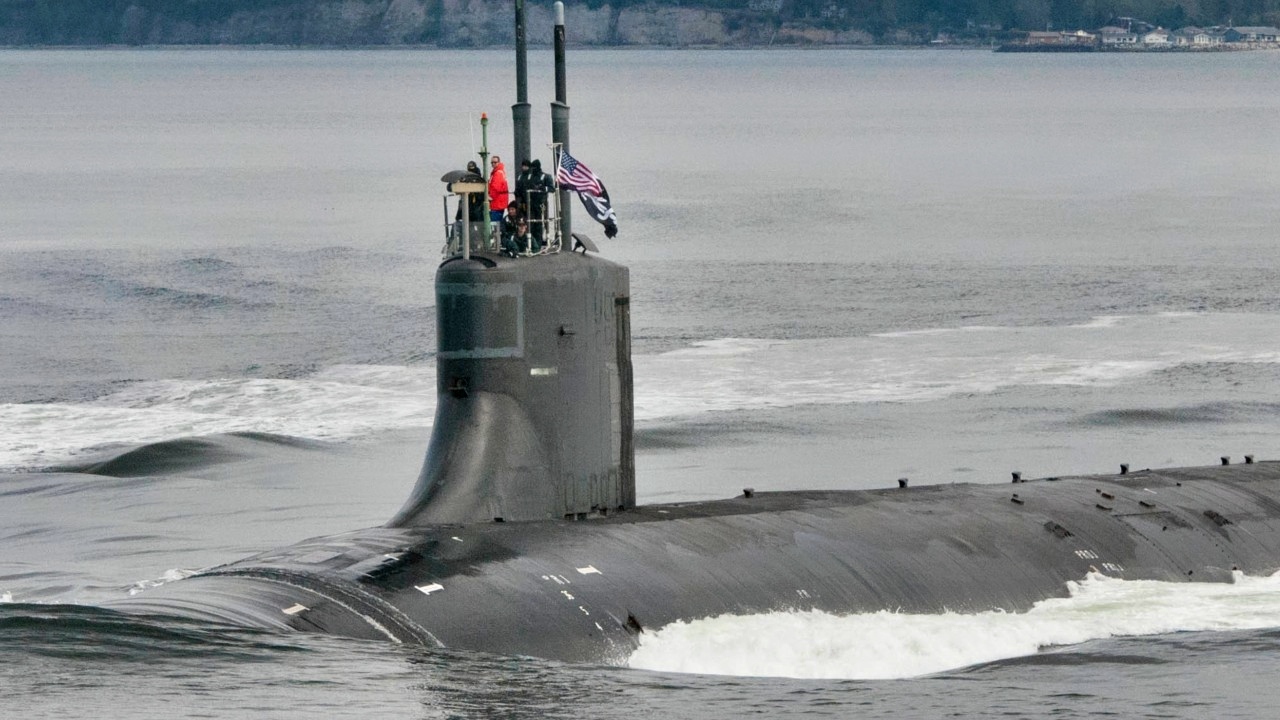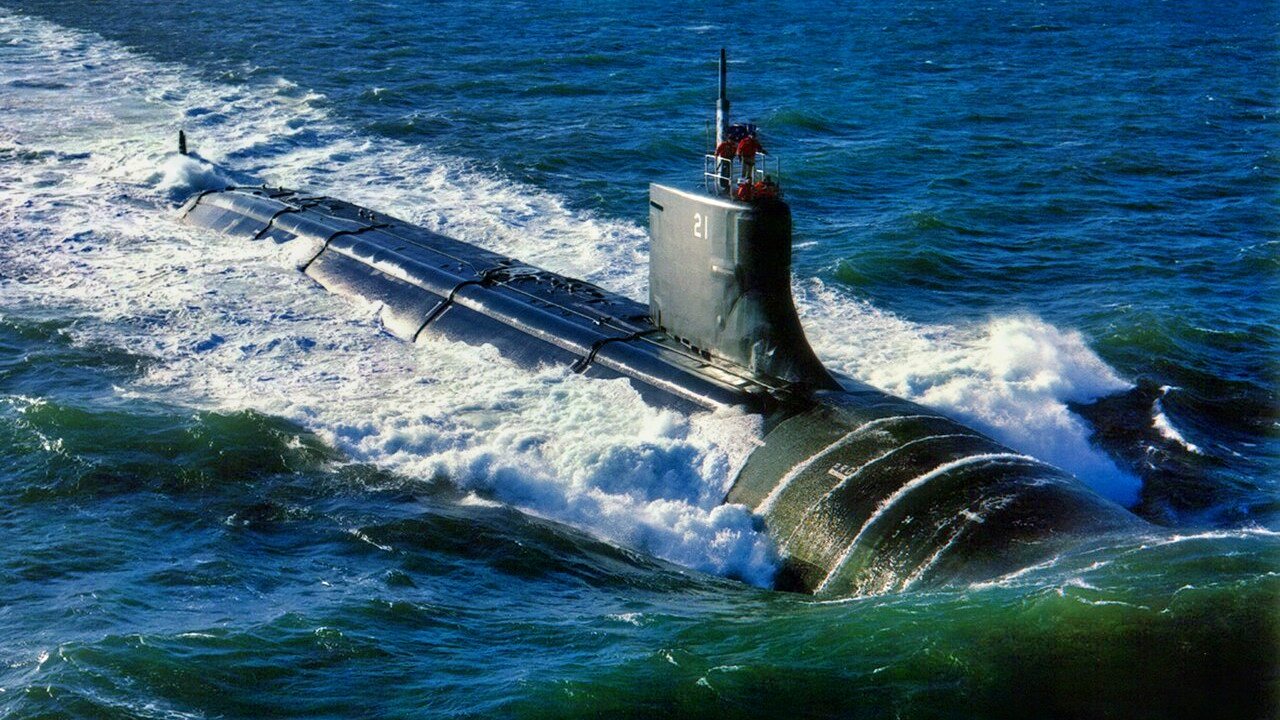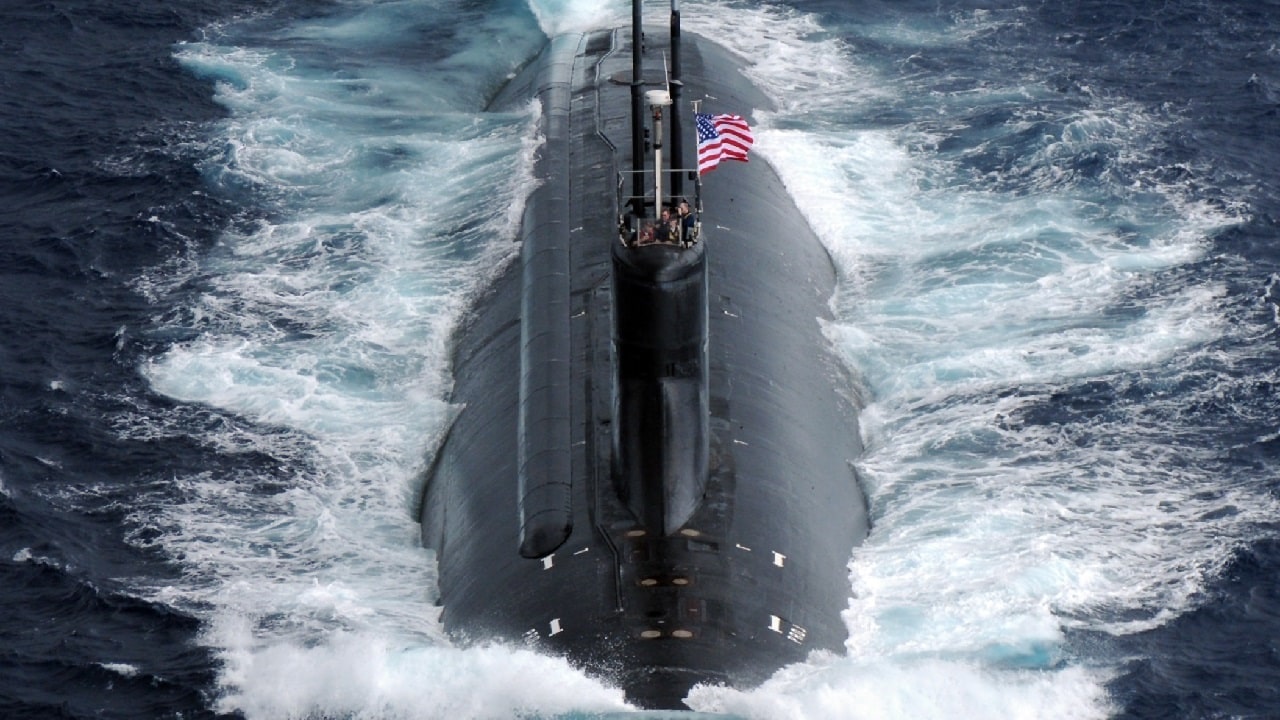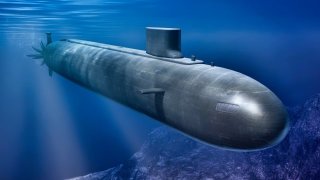Seawolf: Why They Call This Nuclear Attack 'Boat' the F-22 of Submarines
The Seawolf-class submarines were designed during the Cold War as advanced nuclear-powered fast-attack submarines to counter the Soviet Union's naval capabilities. Intended to replace the Los Angeles-class, the Seawolf-class featured superior speed, stealth, and firepower, including the ability to carry up to 50 UGM-109 Tomahawk cruise missiles.
What You Need to Know: The Seawolf-class submarines were designed during the Cold War as advanced nuclear-powered fast-attack submarines to counter the Soviet Union's naval capabilities. Intended to replace the Los Angeles-class, the Seawolf-class featured superior speed, stealth, and firepower, including the ability to carry up to 50 UGM-109 Tomahawk cruise missiles.

-With an expensive price tag of $5 billion per unit (in 2018 dollars), only three of the planned 29 submarines were built—the USS Seawolf, USS Connecticut, and USS Jimmy Carter—before the program was canceled following the Soviet Union's collapse.
-These submarines remain in service today, showcasing the pinnacle of Cold War submarine technology. Many call this the F-22 of submarines for its amazing potential, cost and being cut down to size so soon in its production run.
Seawolf-Class Submarines: The $5 Billion Titans of the Deep
Money was no issue during the Cold War. Instead, during the Cold War, taxpayers and their duly elected representatives were happy to spend indulgently on defense programs – from the F-117 stealth aircraft to the Nimitz-class aircraft carriers to the “Star Wars” missile defense system to the Seawolf-class submarine.
In many respects, the Cold War boiled down to an elaborate arms race. In all realms – air, land, and sea – the superpowers raced urgently to design and build cutting-edge military equipment.
The tempo of the arms race was such that only existential conflict can inspire. It was essential because both the US and the Soviet Union possessed nuclear weapons, which inspired both nations to place many of their resources into furthering their nuclear triad
At sea, developing the nuclear triad meant building nuclear-powered submarines that could lurk indefinitely, with the capacity to fire nuclear warhead-tipped missiles, thus providing a hard-to-track nuclear launch pad that could be secretly stationed in any waters around the world.

The result: deterrence. And to maintain the edge in deterrence each superpower upped the ante in submarine investment. The culmination of the escalating investment, on the American side, was the Seawolf-class submarine.
But once the Soviet Union collapsed, the impetus for much of America’s defense spending collapsed, too. Taxpayers and their duly elected representatives withdrew their support. Funding dried up. Defense programs were cancelled – some still in their infancy, like the Seawolf, of which only three had been made. Yet, the three Seawolfs still serve today, patrolling the world’s oceans as a reminder of what the US fleet might have looked like had the Cold War persisted another decade or two.
A world-class submarine
The Seawolf is a nuclear-powered, fast-attack sub with a $5 billion per unit price tag (in 2018 dollars).
The vessel is not cheap. But the massive price tag yielded an impressive submarine: bigger, faster, quieter, and more heavily armed than the preceding (and widespread) Los Angeles-class.
“The U.S. Navy had builders cram all kinds of goodies into the Seawolf submarine,” National Interest contributor Brent Eastwood wrote for National Interest months back. The “goodies” start with the hull, which was built entirely from HY-100 steel – an upgrade over the weaker HY-80 steel used to build preceding submarines. With the enhanced steel hull, the Seawolf could dive to depths of 490 meters. The Seawolf could also cruise; with the submarine’s S6W pressurized water reactor, the Seawolf had a max speed of 35 knots – not a world-record, but very impressive all the same. More importantly, the Seawolf is very quiet, with a “propeller-less pump-jet propulsion system” that “allowed it to maintain acoustic stealth even when cruising a brisk 20 knots, whereas most submarines are forced to crawl at 5-12 knots to remain discrete,” Eastwood explained.

And, true to the objectives of the Cold War, the Seawolf was built to handle up to 50 UGM-109 Tomahawk cruise missiles – putting the Soviet Union on notice.
Alas, the Navy cancelled production of the Seawolf. Originally, 29 Seawolf submarines were to be built. Three were completed – the Seawolf, Connecticut, and Jimmy Carter – before the program was canned.
About the Author: Harrison Kass
Harrison Kass is a defense writer with over 1,000 published pieces. An attorney, pilot, guitarist, and minor pro hockey player, he joined the US Air Force as a Pilot Trainee but was medically discharged. Harrison has degrees from Lake Forest College, the University of Oregon, and New York University. He lives in Oregon and listens to Dokken.
Image Credit: Creative Commons and or Shutterstock.


